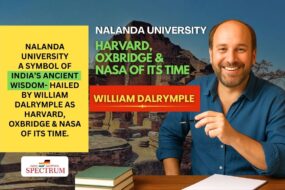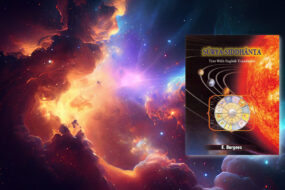- Home
- Culture & Community
- Heritage
- The Legacy of Nalanda Universi ...
The Legacy of Nalanda: A Global Center of Knowledge and Culture
A Beacon of Ancient Wisdom and Modern Learning
“Imagine a place where the world’s greatest minds once gathered, where ideas flowed freely across borders, and where knowledge shaped the future of civilizations. Welcome to Nalanda University — an ancient seat of learning that continues to inspire scholars worldwide.”
What Is Nalanda University Known For?
Located in Bihar, India, Nalanda University is one of the world’s oldest centers of higher education. Established in the 5th century CE, it became a hub for scholars from Asia and beyond. Known for its advanced curriculum, diverse faculty, and legendary library, Nalanda symbolized intellectual exchange, cultural dialogue, and spiritual growth. It served as a beacon of light in an era when knowledge was highly valued, and its influence extended far beyond India’s borders.
What Subjects Were Taught at Nalanda University?
Nalanda University offered a comprehensive curriculum that covered a wide range of disciplines, including:
Buddhist Studies and Philosophy: Focused on Buddhist doctrines, logic, and metaphysics, attracting scholars from across Asia.
Mathematics and Astronomy: Courses included advanced mathematical theories and celestial studies that were highly respected in both the East and West.
Medicine and Health Sciences: The university provided instruction in traditional medicine and anatomy, contributing to advancements in healthcare.
Literature and Languages: Students studied classical Sanskrit, Pali, and foreign languages, enabling cross-cultural exchanges.
Arts and Humanities: Courses in fine arts, architecture, and music were essential for developing well-rounded scholars.
How Was Nalanda’s Library Unique?
Nalanda’s library, known as Dharma Gunj or the Mountain of Truth, was renowned for its extensive collection of manuscripts, scrolls, and texts. It was divided into three main buildings:
Ratnasagara (Ocean of Jewels): Stored rare and sacred scriptures, including Buddhist sutras and philosophical treatises.
Ratnadadhi (Sea of Jewels): Contained volumes on science, mathematics, astronomy, and medicine.
Ratnaranjaka (Jewel-Adorned): Focused on literature, art, and languages, preserving works of both Indian and foreign scholars.
How Did Nalanda Shape the World?
In ancient times, Nalanda attracted over 10,000 students and 2,000 teachers, offering courses that laid the foundation for various fields of study. Scholars like Xuanzang from China and Hyecho from Korea traveled long distances to study and teach here, spreading Nalanda’s knowledge globally. The university’s emphasis on logic and debate helped cultivate critical thinking skills that influenced both Eastern and Western intellectual traditions.
How Was Nalanda Destroyed, and Why Was It Rebuilt?
Despite its global prominence, Nalanda fell into decline in the 12th century following invasions and socio-political upheaval. The university’s extensive library was burned, and its scholars were dispersed. However, the memory of Nalanda’s intellectual achievements persisted through historical records and cultural narratives. Recognizing its historical significance, the Indian government revived Nalanda University in 2010, aiming to recreate its legacy as a global learning center. The modern university offers programs in Buddhist Studies, Philosophy, Comparative Religion, Ecology, and Sustainable Development, attracting students from across the globe. By integrating ancient wisdom with contemporary research, Nalanda continues to promote cross-cultural understanding and global collaboration.
What Makes Nalanda Important for the World?
Understanding Nalanda University is essential because of its historical, cultural, and educational significance. Its importance extends beyond India, influencing the global academic landscape in several ways:
Preservation of Ancient Knowledge: Nalanda preserved critical knowledge in science, arts, and philosophy, which shaped intellectual traditions worldwide.
Cross-Cultural Exchange: As a melting pot of diverse cultures and ideas, Nalanda exemplified the power of global dialogue and cooperation.
Foundation of Modern Education: Nalanda’s holistic curriculum and emphasis on logic, ethics, and critical thinking laid the groundwork for contemporary educational models.
Symbol of Resilience and Revival: The modern revival of Nalanda demonstrates the enduring relevance of ancient wisdom in addressing contemporary challenges.
Global Academic Impact: By fostering international collaborations and interdisciplinary research, Nalanda continues to influence global education and cultural understanding.
Why Is Nalanda Recognized by UNESCO?
In 2016, the ruins of Nalanda Mahavihara were designated as a UNESCO World Heritage Site, acknowledging the university’s unparalleled contributions to human history and education. UNESCO’s recognition highlights Nalanda’s role as a global center of learning that fostered cross-cultural exchanges and advanced knowledge in various fields. This status not only preserves the site’s historical legacy but also reinforces its importance as a symbol of intellectual achievement and global connectivity.
How Does Nalanda Connect with Indo-German Academic Exchange?
Nalanda University plays a pivotal role in strengthening academic and cultural ties between India and Germany. Through collaborative research, student exchanges, and joint conferences, scholars from both countries share insights and advance interdisciplinary knowledge. Germany’s emphasis on innovation aligns with Nalanda’s mission, fostering a dynamic exchange of ideas that benefits both nations. Additionally, partnerships with German universities and research institutions help students and faculty explore topics such as sustainable development, philosophy, and comparative religion.
Why Is Nalanda Relevant Today?
In an era of global challenges, Nalanda’s emphasis on critical thinking, ethical leadership, and sustainable living remains highly relevant. Its interdisciplinary approach prepares students to address complex issues while promoting global citizenship and environmental stewardship. The university’s curriculum integrates traditional knowledge with modern science, encouraging students to think creatively and solve problems collaboratively. As a symbol of cross-cultural dialogue, Nalanda continues to inspire scholars worldwide, fostering a spirit of intellectual curiosity and mutual respect.
How Can Nalanda Shape the Future?
Nalanda University’s revival is more than a restoration of the past—it is a vision for the future. By promoting interdisciplinary research, fostering global partnerships, and emphasizing sustainability, Nalanda aims to address contemporary challenges such as climate change, social inequality, and cultural preservation. Its focus on holistic education empowers students to become responsible global citizens, capable of leading with compassion and wisdom. As the university continues to grow, it holds the potential to become a global hub for innovative research and cross-cultural dialogue, bridging the gap between ancient wisdom and modern knowledge.
Nalanda University: A timeless symbol of intellectual pursuit and cultural harmony
Nalanda University stands not merely as an academic institution, but as a timeless symbol of intellectual pursuit and cultural harmony. Rooted in ancient wisdom yet driven by a global vision, Nalanda represents the enduring power of education to unite civilizations, inspire innovation, and nurture enlightened thought. Its legacy reminds us that learning transcends borders, and that preserving such heritage is essential—not just for honoring the past, but for shaping a more connected, compassionate, and thoughtful future.
Source Links:
• Nalanda University Official Website: www.nalandauniv.edu.in
• Ministry of External Affairs, Government of India: www.mea.gov.in
• Archaeological Survey of India: www.asi.nic.in
• UNESCO World Heritage Sites: whc.unesco.org
• German Academic Exchange Service (DAAD): www.daad.de
• Indo-German Science and Technology Centre (IGSTC): www.igstc.org




